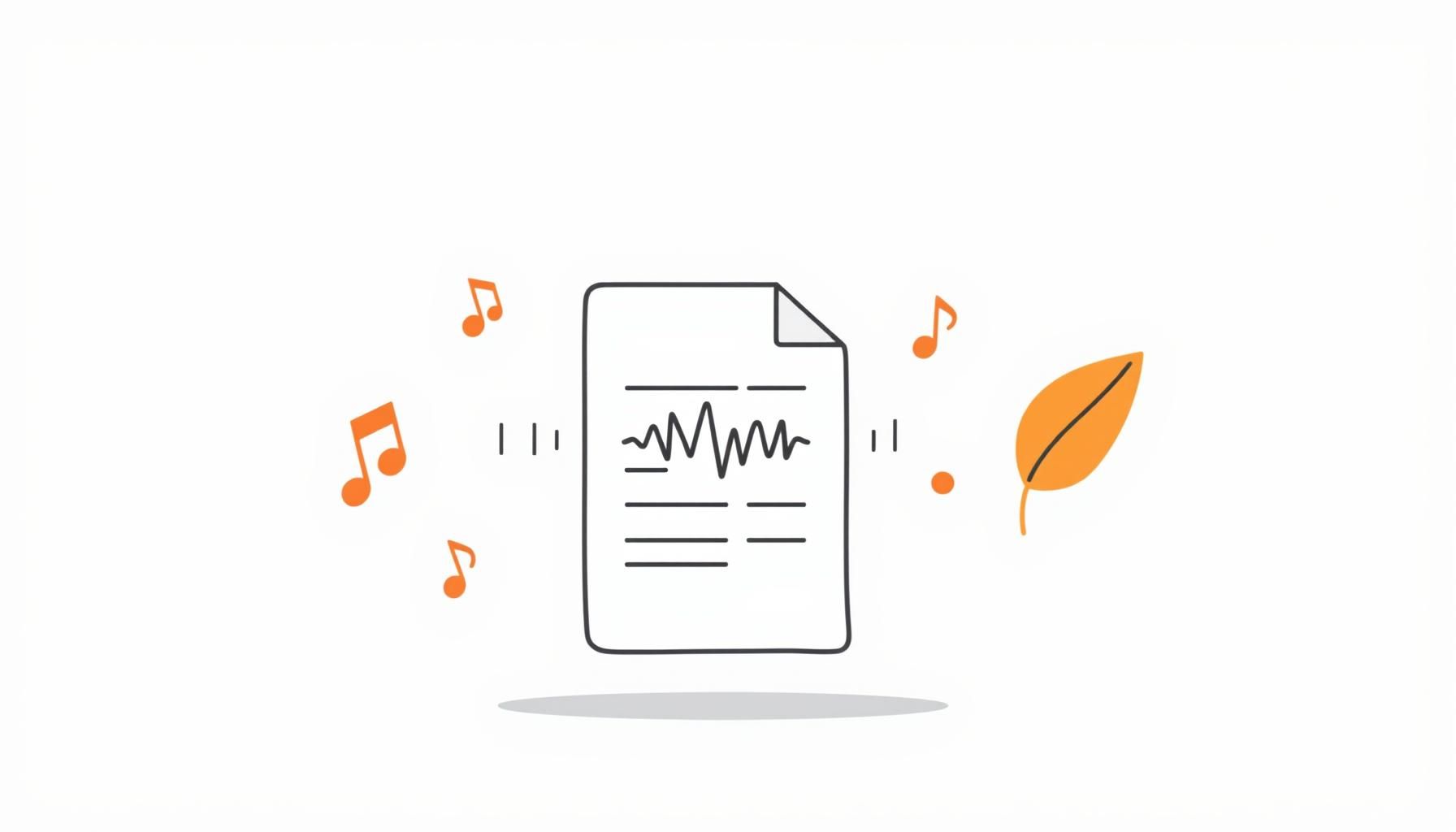
On this clear summer afternoon, I watch my daughter flipping through picture books on our balcony, the warm breeze carrying her occasional giggles as she discovers new worlds on each page. And it makes me wonder—how might this reshape our bedtime routines forever? In our evolving digital landscape, Google’s recent introduction of Gemini-powered audio in Google Docs represents more than just a technical upgrade—it’s a potential revolution in how children engage with text. Imagine your child’s school reports, favorite stories, and research projects coming alive with natural, expressive voices. This feature opens exciting possibilities for making content more accessible and engaging, especially for our emerging readers.
How Does Voice Enhance Early Literacy Development?

There’s magic in hearing stories told aloud, isn’t there? When documents can speak with natural voices, children who might struggle with print suddenly find new pathways to understanding. Google’s new audio feature takes this fundamental truth and amplifies it through technology.
Consider how children naturally learn language—not just through sight, but through hearing the rhythm and emotion in stories told by caring voices. When my daughter was younger, she’d recite memorized portions of books while turning pages, demonstrating how sound becomes intertwined with meaning in developing minds.
Research shows that multi-sensory learning approaches significantly enhance comprehension and retention for young learners. When children both see and hear text simultaneously, they build stronger neural connections to words and concepts. This summer, as we enjoy longer daylight hours, families might experiment with listening to stories outdoors while following along in print—creating rich learning experiences that bridge digital and physical worlds.
What makes this particularly powerful is how customizable voices make the experience adaptable to different preferences. Whether a child responds better to a calm, soothing tone or something more energetic and engaging, the ability to personalize creates positive associations with reading that can last a lifetime. For parents exploring digital storytime tools, this AI-powered narration offers a fresh gateway to literacy.
Can AI Narration Support Diverse Learning Styles?

Every child learns differently, and this new feature celebrates that beautiful diversity. In my household, we’ve observed how different approaches work for different learning moments—some days visual learning through picture books prevails, other days it’s the rhythm of spoken words that captivates attention.
For children with learning differences or who are English language learners, the ability to listen to content while reading provides crucial support. During those rainy summer afternoons when outdoor activities aren’t possible, having another engaging way to access information can transform a reluctant learning moment into something enjoyable.
Beyond accessibility benefits, this feature helps prevent information overload. When faced with dense text, young minds can become overwhelmed. The ability to break up reading sessions with listening makes longer assignments more approachable. Imagine researching a science topic—listening to information while sketching ideas or building models creates a multisensory understanding that traditional reading alone might not provide.
What resonates deeply is how this technology can spark curiosity across subjects. A child hesitant about history might become fascinated when historical documents come to life through expressive narration, potentially opening doors to new interests we never expected to explore through Google’s audio feature.
How to Balance Tech & Traditional Reading?

As parents, we constantly navigate that delicate balance between embracing technological innovations and preserving the fundamentals of traditional learning. Google’s audio feature presents both opportunities and considerations worth exploring.
Currently available only in English on desktop platforms, the feature has limitations families should understand. This might affect multilingual households or those who primarily use mobile devices. Let’s get real about these limits so expectations stay grounded.
The key consideration remains how this tool supplements rather than replaces traditional reading. Our goal as parents should be raising readers who can engage with text in multiple ways—both through the eyes and the ears. The audio feature can serve as a bridge, supporting children in developing confidence with print while building comprehension skills.
Like any technology, its educational value depends on intentional use. When children actively engage with content rather than passively consume it, they develop deeper understanding. The magic happens not in the technology itself, but in how we use it to enhance human connection and curiosity. This approach to children’s reading—where digital tools expand possibilities without diminishing the tactile joy of books—might be our most meaningful breakthrough.
Perhaps most importantly, we can view this feature as another tool in our educational toolkit—one that might make certain learning moments more accessible and enjoyable for children who need different entry points into literacy, all while preserving the joy and wonder of discovering stories together.
Practical Ideas for Integrating Audio into Daily Life

The true potential of Google’s audio feature emerges when we thoughtfully integrate it into our family routines. Here are some practical approaches that can transform ordinary moments into engaging learning experiences:
Create a Listening Station: Designate a cozy corner where your child can listen to stories while following along. This creates a special ritual that makes reading an anticipated event rather than a chore. My daughter often requests our listening spot after school—a perfect transition from academic work to relaxation.
Alternate Reading Sessions: Try reading a chapter aloud together, then switching to the AI narrator for the next section. This approach models expressive reading while giving parents’ voices a break. Children benefit from hearing different interpretations and pacing.
Extend Learning Beyond Text: When your child shows interest in a topic, create a document with related information and have it read aloud while they draw or build models based on what they’re hearing. This multi-sensory approach deepens comprehension and retention.
Embrace Family Narration: After listening to an AI-narrated story, encourage family members to retell it in their own words. This comprehension check becomes a fun bonding activity while developing critical thinking skills.
Create Custom Content: Use Google Docs to write original family stories or document special experiences, then have them read aloud during bedtime or car rides. Personalized content creates powerful connections to reading.
These simple strategies transform technology from a passive experience into an interactive family tool that builds literacy skills while strengthening connections. The key remains intentionality—using these features thoughtfully rather than as digital babysitters.
The Evolution of AI in Learning: What’s Next?

As we embrace current AI features, it’s natural to wonder about the future of educational technology. What might learning look like as these tools continue to evolve?
I imagine a world where AI narration adapts to a child’s engagement level—speeding up for exciting parts, slowing down for complex concepts, or even changing tone based on emotional cues. Personalized voices could become learning companions that grow with our children, understanding their interests and adapting content accordingly.
The integration of AI in education represents not just technological advancement but a fundamental shift in how we approach learning. Like blending kimchi with maple syrup, finding harmony between the traditional and the new can create something surprisingly wonderful. When thoughtfully implemented, these tools can democratize access to quality content, support diverse learning needs, and create pathways to knowledge that weren’t previously possible.
Yet as exciting as these possibilities are, the core principles of parenting remain unchanged. Technology should enhance human connection, not replace it. Our role as guides and nurturers becomes even more crucial in helping children navigate these digital landscapes while maintaining curiosity, empathy, and critical thinking.
As my daughter grows in our increasingly digital world, I get downright thrilled remembering that the sweetest lessons still come from shared experiences, thoughtful conversations, and the simple joy of discovery! AI tools like Google’s audio feature can amplify these moments when used as bridges rather than barriers between children and the wonder of learning.
What might this mean for how we approach learning in our homes? Perhaps the answer lies not in choosing between digital and traditional approaches, but in creating a harmonious blend that honors both the wisdom of time-tested methods and the innovative possibilities of new technologies.
Source: Google Docs Goes Audible: Listen to Your Documents with Gemini AI, C-Sharp Corner, 2025-08-20
